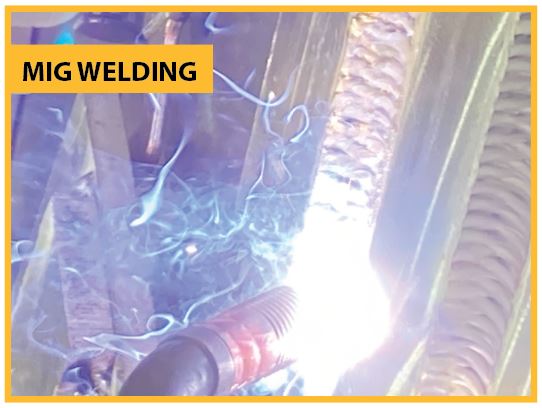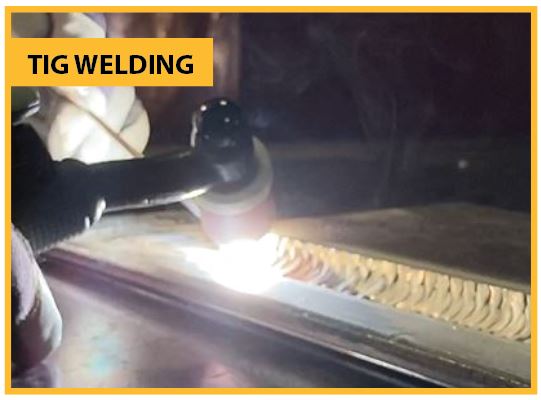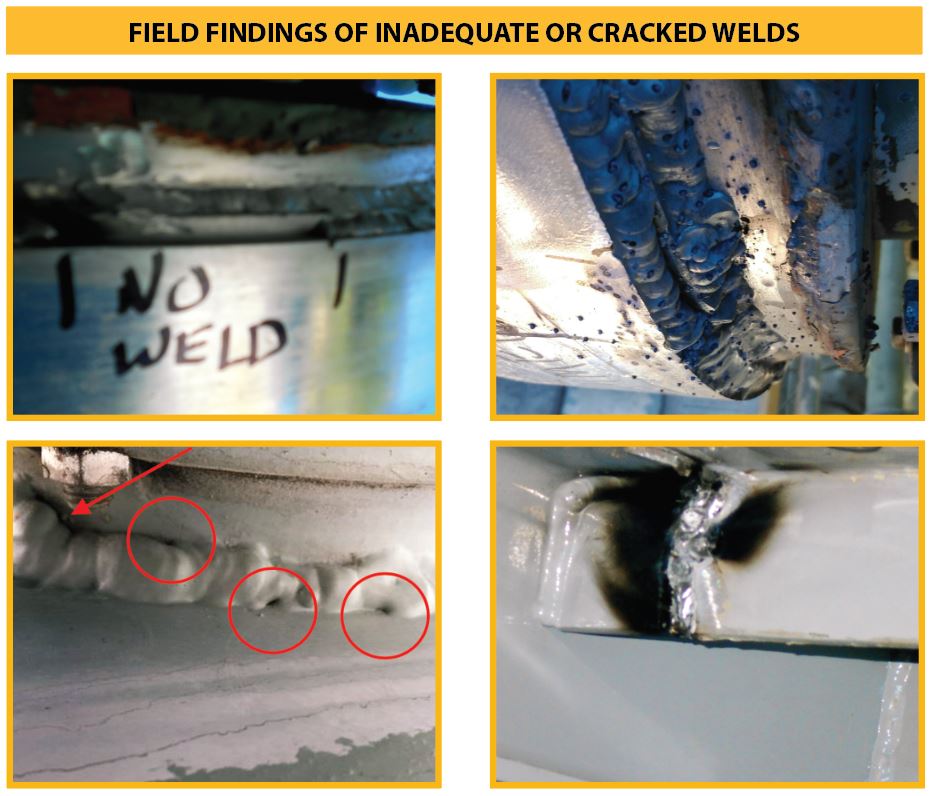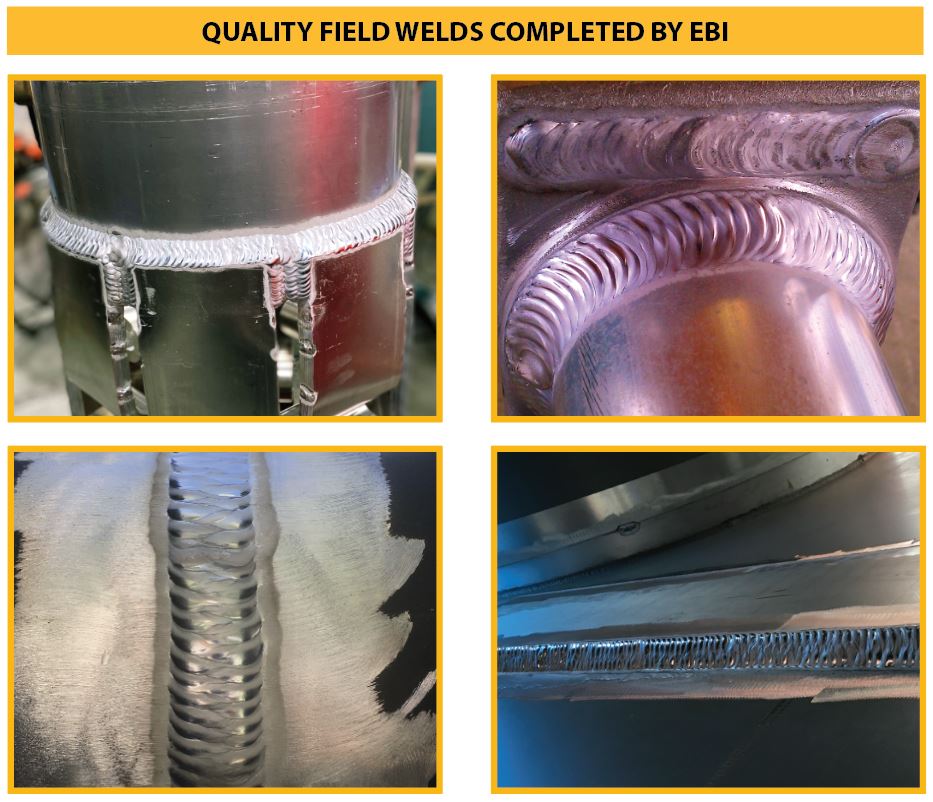Importance of Weld Quality – Purpose, Function & Methods Explained
Purpose/Function & Method Application of a Weld on Isophase Bus
The purpose of having a good quality weld on joints is to provide a smooth transition of power across the conductor and enclosure. If the weld has poor quality, it can create a hot spot, opportunity for contamination, and has the potential to produce an electric discharge.
Common Misconception
Welds are not all created equal! In fact, welding defects and discontinuity are the most common ways an asset or critical equipment can be put at risk. Especially those that are designed to carry current, such as the electrical bus duct system. Inadequate or poor quality aluminum bus duct welds lack proper fusion; causing porosity, surface irregularity, and discontinuity. These critical inconsistencies can be catastrophic if not detected and properly repaired.


MIG Welding
Metal Inert Gas (GMAW or MIG) is an arc welding process in which a continuous solid wire electrode is fed through a welding gun and into the weld pool, joining the two base materials together. MIG welding is sometimes referred to as the “hot glue gun” of the welding world and is generally regarded as one of the easiest type of welding to learn.
MIG Welding Characteristics:
- Easy to learn
- Faster
- Recommended for conductor welds/shorting plates. EBI does NOT recommend MIG welding for enclosure welds. Why? MIG welding produces a less controlled weld leading to weld splatter. Weld splatter can cause contamination inside the bus, which can create system and operation quality issues.
TIG Welding
Tungsten Inert Gas (GTAW or TIG) is an arc welding process that produces the weld with a non-consumable tungsten electrode. TIG welding is commonly used in quality critical industries like powerplants, and aerospace because of its ability to produce beautifully clean, strong, precision quality welds. Compared to MIG welding, it is a slower process and welders require highly specialized training in order to ensure they achieve proper precision and accuracy.
EBI has a rigorous in-house Bus Duct Technician training program, which includes teaching our welders proper aluminum TIG welding and inspection techniques. This, coupled with our in-house Certified Welding Inspectors (CWI) who provide invaluable support, training, and guidance to ensure exceptional weld quality, workmanship, and conformance to specifications, sets EBI apart. Our highly skilled team and their devotion to delivering quality craftsmanship during each and every project are one of the key reasons we have been industry leaders since 1974.
TIG Welding Characteristics:
- Highly versatile, enabling qualified and specialty trained industry professionals to join a wide range of materials
- Welder has greater control
- Functionally strong
- No splatter
- Recommend for welds with a blindside, such as an enclosure


Best Practice TIG Method Application/Conclusion
Electrical current flows across the enclosure equal and opposite from the conductor. As such, it’s important that the welds be complete, both full circumference and fill thickness, and should be 110% of the metal with no undercut or porosity. Any type of bump or ridge from weld intrusion has the potential to cause a disruption in electricity flow. The application of TIG welding is preferred for high voltage enclosure welds and best for blindside welding because of control, no splatter, and smoothness of the final weld.
For more information on our specialty welding services, please visit our specialty welding page.
